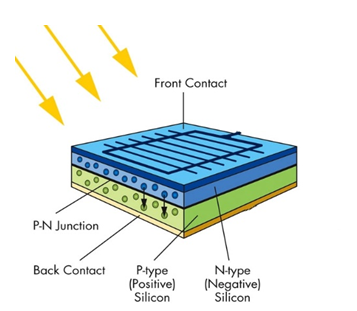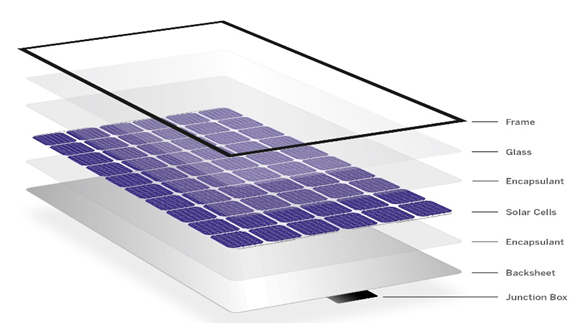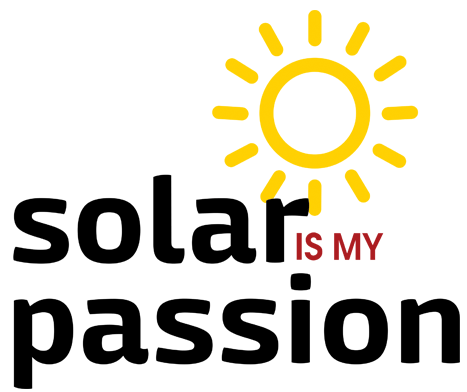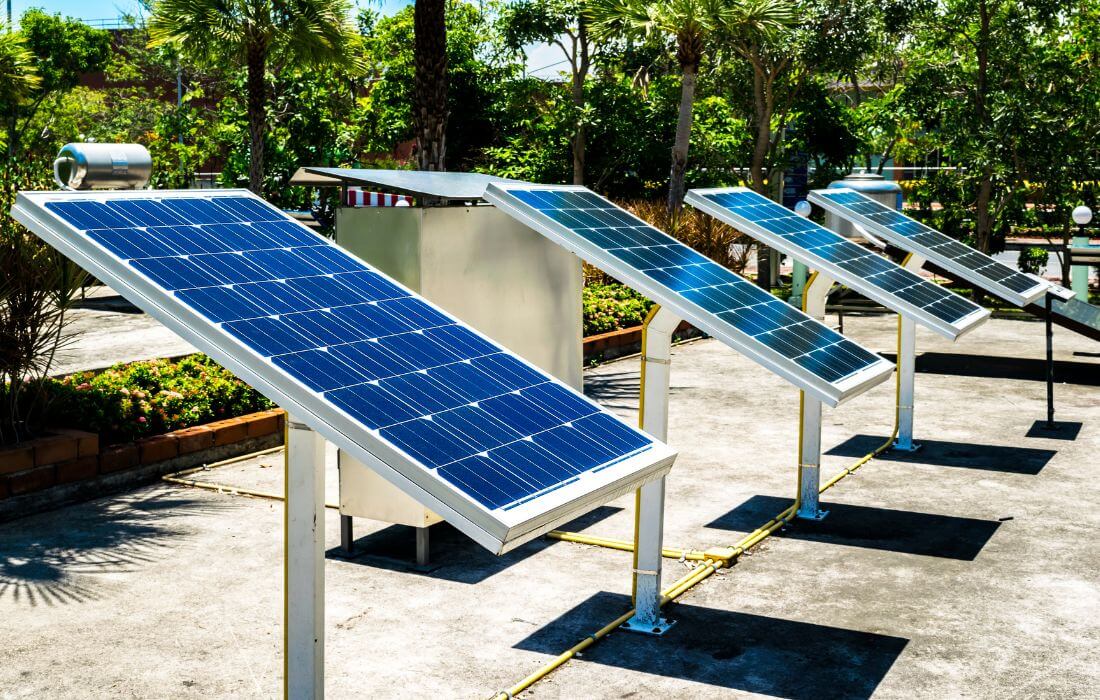In the last two decades, the contribution of solar energy to the world’s total energy supply has grown significantly. Energy from the sun is the most abundant and freely available energy on Earth. Solar photovoltaic systems convert solar energy directly into electrical energy. As sunlight drops rays on a cell positioned in the panel, that cell turns light into electricity. Before proceeding in detail How do Solar Panels Work? let’s clear all concepts related to solar panel working.
SCIENCE BEHIND SOLAR CELL
To utilize solar energy, we need help from another abundant element on earth sand. The sand has to be converted to 99.999% pure silicon crystal to use in solar cells. To achieve this the sand has to go through a complex purification as
Sand + Carbon→ Raw Silicon
The Raw Silicon gets converted into a gaseous Silicon compound form. This is then mixed with hydrogen to get highly purified silicon. These silicon ingots are reshaped and converted into very thin slices called Silicon wafers. The silicon wafer is the heart of the PV cell.
SOLAR CELL CONSTRUCTION
As we know we use semiconductors (silicon) to make solar cells. Here we use two types of silicon semiconductors i.e., P-type and N-type. N-type material was placed on the top of the cell which is of thickness 0.3 micrometer and P-type material was placed on the bottom of the cell which is of thickness 300 micrometer. N-type material is thin as compared to P-type material because when sunlight falls on it can easily penetrate the cell. On the top of the n-type material, there is some metal finger. By joining the metal fingers, a wire comes which works as a negative terminal. On the top of metal fingers there is some bus bar. At the bottom of the P-type material, there is a back contact which is made up of copper through which we take out the positive wire. So, the solar cell acts as a battery. These solar cells are connected in series/parallel and form a solar panel.

STRUCTURE OF SOLAR PANEL
Solar panels have different layers, one of them is a layer of cells. The top negative side of the solar cell gets connected to the bottom positive of the next solar cell through copper strips. It forms a series of cells when a series of cells connect parallel to another series of cells it forms a panel. A single cell is of 0.5v. The combination of the series-parallel cell increases the voltage and current value to a usable range.
The layer of EVA sheeting on both side of cells protects them from shocks, vibration, and humidity. There is an anti-reflection coating (tempered glass) that doesn’t let the radiation go away or doesn’t let the cell to heat.

How Do Solar Panels Work?
The sunlight falling on the earth is basically bundles of photons or bundles of small energy. Each photon has a finite amount of energy. For a generation of electricity, photons must be absorbed by solar cell. Photons in the sunlight falling on the solar cell’s front face are absorbed by semiconducting materials.
In the P-type material, there is some holes and in the N-type material, there is some electrons on it. These electrons are free electrons. When we attach P and N-type material there is a junction between them which is called the Depletion layer. As the electrons in N material are free they come to P side through the depletion layer and fill the holes in P side. So, there is no free electrons and holes in the depletion layer. Due to the electron migration the n-side boundary becomes slightly positive and P-side becomes negative charged.
When the light strikes on N region of the PV cell it penetrates and reaches up to the depletion region. This photon energy is sufficient to generate electron-hole pairs in the depletion region. The electric field in the depletion region drives the electrons and holes out of the depletion region. The concentration of electrons in the N region and holes in the P region become so high that a potential difference develops between them. As soon as we connect any load between these regions electrons will start flowing through the load. The electron will recombine with the holes in P region after completing his path.
In this way, a solar cell continuously gives direct current. So, the solar cell with day light falling on it can directly drive DC electrical appliances. But, the amount of electricity generated is proportional to the amount of light falling. So, the amount of electricity generated through out the day is not constant.
HOW DOES SOLAR PANEL EFFICIENCY MATTER IN THE GENERATION
A solar cell converts some fraction of light energy falling on it into electrical energy. In this way, a PV module also converts only some portion of the total light falling on it into electrical energy. The ratio of electrical energy generated to the input light energy is referred as efficiency of PV modules. The efficiency of module basically depends on the solar cells used and the method used for interconnecting them. In a module, the cells can be inter-connected in series or parallel connection. Once a module is assembled, its efficiency value becomes fixed and it generally doesn’t change.
The efficiency of a module is given in terms of maximum power or peak power that module can generate for a given input solar radiation. For a given input power Pin, the value of the output power is directly determined by the value of the module’s efficiency and module Area. So, the module with higher efficiency values will produce more power as efficiency is directly proportional to maximum power. As module efficiency is higher generation will be higher.
n= Pmax / Pin ×Area


